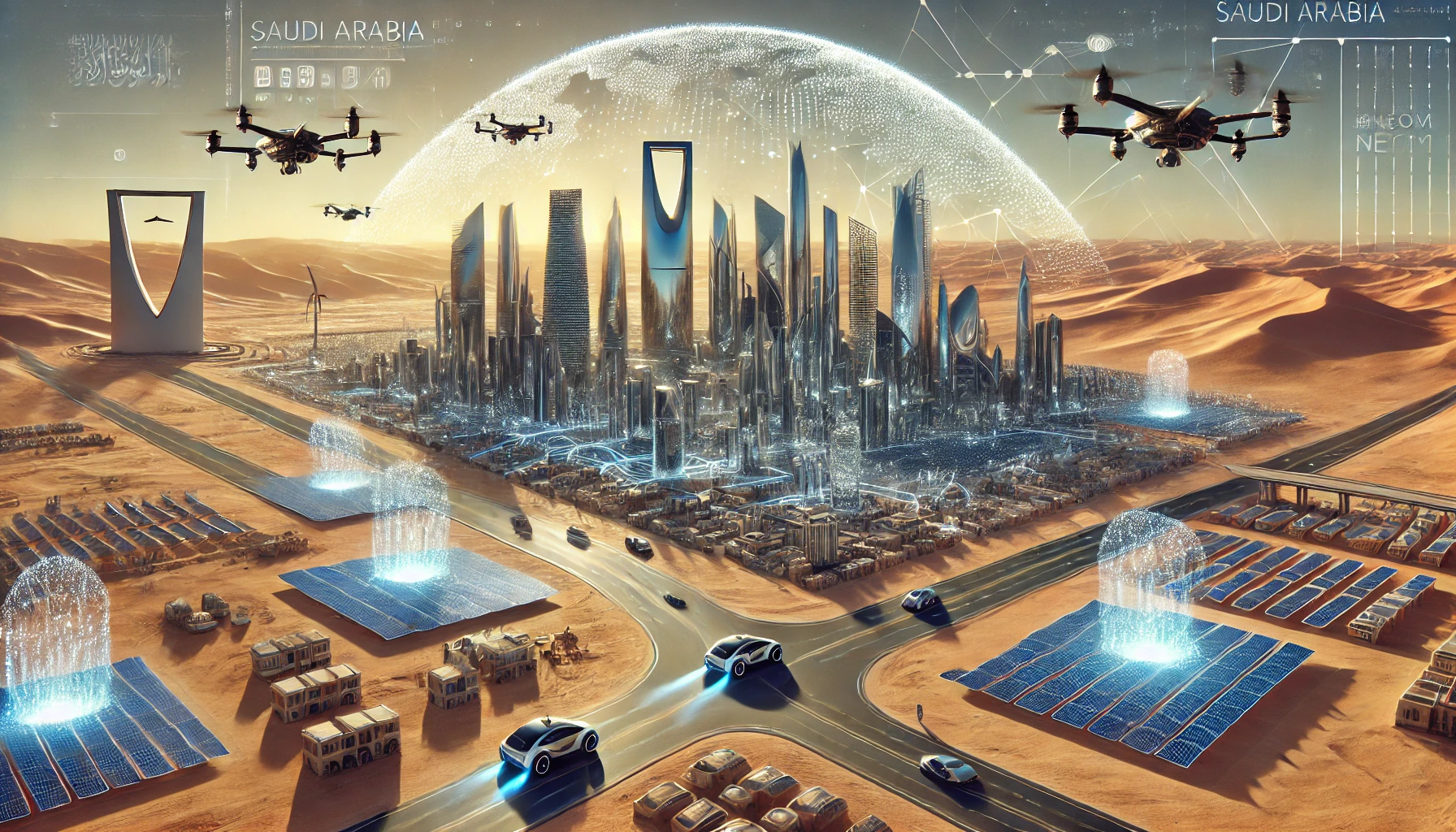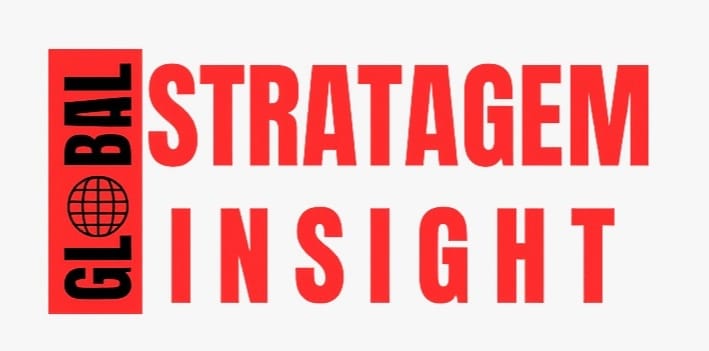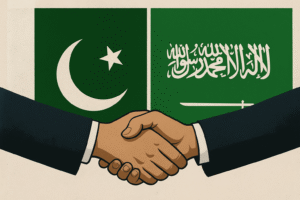Saudi Arabia’s NEOM Initiative: A Geopolitical Power Play

Saudi Arabia’s NEOM: A Vision for Regional Leadership – A high-tech metropolis driven by innovation, sustainability, and strategic global influence
Introduction
Saudi Arabia’s Vision 2030 is a transformative plan designed to diversify the kingdom’s economy and reduce its dependence on oil. Central to this vision is NEOM, a $500 billion megacity project that aims to become a hub for innovation, technology, and sustainability. While NEOM is often discussed in terms of its futuristic architecture and environmental aspirations, its geopolitical implications are equally significant. The project represents Saudi Arabia’s ambition to assert regional leadership, reshape its international image, and influence global dynamics. This article explores NEOM’s geopolitical dimensions and its potential impact on the Middle East and beyond.
Geopolitical Implications of NEOM
NEOM, a central pillar of Saudi Arabia’s Vision 2030, holds significant geopolitical implications for the Middle East and beyond. Strategically located near the Red Sea, a crucial global trade artery, NEOM positions Saudi Arabia as a key player in international logistics and commerce. By enhancing connectivity between Asia, Africa, and Europe, the project underscores the kingdom’s ambition to become a global trade hub.
NEOM’s focus on technology and sustainability bolsters Saudi Arabia’s soft power, presenting it as a forward-thinking nation. By investing in renewable energy, artificial intelligence, and green infrastructure, NEOM aligns the kingdom with global efforts to combat climate change, reinforcing its role in climate diplomacy and the global energy transition. This strategy strengthens Saudi Arabia’s partnerships with key global players like the United States, China, and the European Union.
Regionally, NEOM fosters economic integration with neighbors such as Egypt and Jordan through collaborative initiatives and shared infrastructure. This economic interdependence enhances Saudi Arabia’s leadership role while counterbalancing rivals like Iran. However, challenges such as regional instability and human rights concerns pose risks to NEOM’s global appeal. Ultimately, NEOM is not just a city; it is a statement of Saudi Arabia’s geopolitical ambitions to lead in a rapidly evolving global order.
NEOM as a Strategic Asset
Located at the intersection of three continents—Asia, Africa, and Europe—NEOM’s geographic position is inherently strategic. It lies near the Red Sea, a vital maritime trade route that connects the Suez Canal to global markets. By developing NEOM, Saudi Arabia is positioning itself as a pivotal player in global logistics and trade, reducing dependency on oil revenues while securing its influence over a critical waterway. Moreover, NEOM’s proximity to regional allies like Egypt and Jordan underscores its role in fostering regional cooperation. Through collaborative initiatives such as the Red Sea Project, Saudi Arabia aims to strengthen economic and security ties, enhancing its leadership role in the Arab world.
NEOM is envisioned as a city of the future, leveraging cutting-edge technologies such as artificial intelligence (AI), robotics, and renewable energy. By investing heavily in these sectors, Saudi Arabia aims to become a technology leader in the Middle East, rivaling established hubs like Dubai and emerging competitors like Israel.
This technological focus has geopolitical implications. It positions Saudi Arabia as a partner of choice for global tech firms and investors, enabling the kingdom to forge strategic alliances with countries like the United States, China, and the European Union. These alliances not only bring economic benefits but also enhance Saudi Arabia’s bargaining power on the international stage.
Soft Power and Image Transformation
For decades, Saudi Arabia’s global image has been shaped by its oil wealth and conservative social policies. NEOM represents a deliberate effort to rebrand the kingdom as a progressive, forward-thinking nation. The city’s futuristic vision—complete with flying taxis, AI-driven governance, and a zero-carbon footprint—sends a strong message about Saudi Arabia’s commitment to innovation and sustainability.
This rebranding serves a dual purpose. Domestically, it aligns with Crown Prince Mohammed bin Salman’s efforts to modernize Saudi society and attract young talent. Internationally, it bolsters Saudi Arabia’s soft power, allowing the kingdom to project a more appealing image to global audiences. This enhanced soft power can translate into greater influence in multilateral forums such as the United Nations and the G20.
NEOM’s emphasis on renewable energy aligns with global efforts to combat climate change, presenting Saudi Arabia as a responsible stakeholder in climate diplomacy. The city is set to host one of the world’s largest green hydrogen plants, highlighting the kingdom’s ambitions to lead in the clean energy sector.
By championing renewable energy, Saudi Arabia is not only diversifying its economy but also positioning itself as a key player in the global energy transition. This shift has geopolitical ramifications, enabling the kingdom to engage with both developed and developing nations on energy security and sustainability.
NEOM is a cornerstone of Saudi Arabia’s efforts to promote economic integration within the Middle East. By attracting foreign direct investment and fostering innovation, the project has the potential to create economic spillovers for neighboring countries.
For instance, NEOM’s development is likely to boost trade and tourism in Egypt and Jordan, strengthening their economic ties with Saudi Arabia. This economic interdependence can serve as a stabilizing force in a region often characterized by political and economic volatility. Additionally, NEOM could act as a counterbalance to regional competitors like Iran, reinforcing Saudi Arabia’s influence in the Gulf and beyond.
While NEOM’s potential is immense, it is not without challenges. The project’s ambitious scope requires substantial financial and human resources, raising concerns about its feasibility and sustainability. Moreover, geopolitical tensions in the Middle East could pose risks to NEOM’s success. For instance, Saudi Arabia’s rivalry with Iran could lead to regional instability, affecting investor confidence and the project’s overall progress. Additionally, the kingdom’s human rights record and involvement in conflicts like Yemen have drawn criticism from international observers, potentially undermining NEOM’s global appeal.
Conclusion
NEOM is more than just a megacity; it is a symbol of Saudi Arabia’s aspirations for regional leadership and global influence. By leveraging its strategic location, technological innovations, and commitment to sustainability, NEOM positions the kingdom as a key player in the 21st century. However, the project’s success will depend on Saudi Arabia’s ability to navigate domestic and regional challenges while fostering international partnerships. If executed effectively, NEOM could not only transform the kingdom’s economy but also reshape the geopolitical landscape of the Middle East. In this sense, NEOM is not just a vision of the future—it is a statement of Saudi Arabia’s ambitions to lead in an increasingly interconnected and competitive world.



